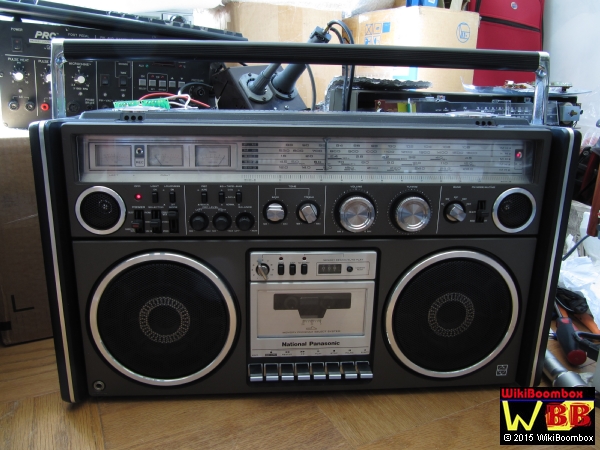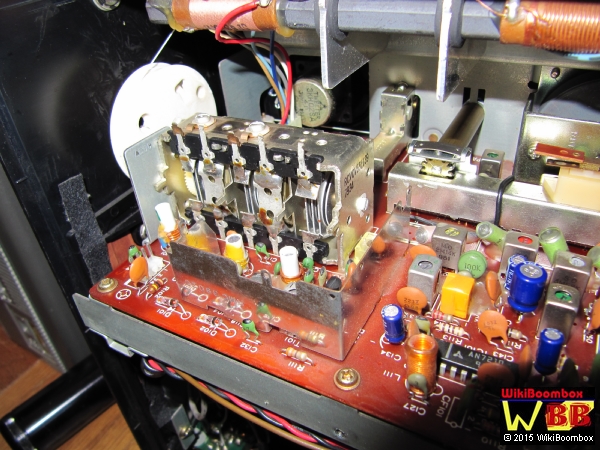The National Panasonic RS-4360dft is virtually identical to the Panasonic RX-7700 boombox. For all practical purposes, they are identical but due to trademark issues, the National name could not be used in USA so they were sold using the Pansonic name instead.

This is a top tier boombox, and the quality of construction reflects that. Sound is excellent with a nice warm tone. However, it does not have very high power so those users wishing to "blast" this unit may be somewhat disappointed. Otherwise, everything about this model feels high quality. It has a fine detented volume control that is a nice touch as most controls on portables just use a friction control. Pop up microphones covered with what appears to be stainless mesh lends a strikingly attractive feature. The tuner dial is lighted but lacks an acrylic light carrying panel to even it out. Every RS-4360dft example we've seen is black with silver dial. The Panasonic model came in both a silver finish with black dial, as well as the more common Black with silver dial. This model takes 10 "D" cells. The antennas retract all the way into the top unstead of laying flat along the top edge as frequently seen on other boomboxes. You would think that this feature alone would result in fewer broken antennas, however for whatever reason, the antennas on this model is almost always broken. It could be that users did not know that the antenna base swivel need to be pulled completely out before attempting to swivel. So while it probably seemed like a good design, in retrospect, it might be considered =fail. This model used to be extremely rare with one example known to have sold in AU for over $2600 about 5 or 6 years ago. However, some collectors in South Korea has discovered that there is a strong market for this model outside of Korea and has managed to snap up the local radios offering them for sale internationally.
We are unsure what the original sales price was when initially sold, but it must have been top tier pricing. It weighs 25 pounds without batteries making this one of the heaviest boomboxes for it's size. Much of that is due to extensive use of metal in it's construction from the chassis, to the cassette deck. Even the tuner uses a metal finned tuning capacitor, a feature that is very seldom seen in boomboxes except for the most high end designs.
A metal finned tuning capacitor is used on this model, a feature almost unheard of in boombox design due to cost

